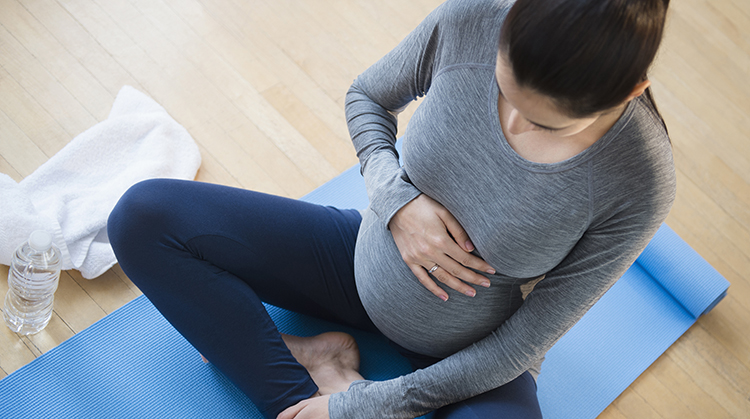Is your body ready to carry a baby? You can ensure it is by addressing any pain, posture, or muscle weakness before getting pregnant. Here are five tips to help prepare your body and guard against pain and other problems during and after pregnancy.
1. Make sure your pelvic floor muscles can contract, relax, and stretch properly.
Many women may be doing Kegels incorrectly. It is helpful to see a physical therapist for an assessment. Some people cannot do proper contractions because their muscles are too tight, and they need to relax them before strengthening them.
During birth, the pelvic floor muscles need to be able to relax and stretch. This allows your baby to pass through the vaginal canal. Being able to stretch these muscles without bearing down is just as important as strengthening them.
Consult a physical therapist before beginning any exercise program during or after pregnancy. A physical therapist specializing in women’s health physical therapy or the pelvic floor can teach you how to do these exercises safely and correctly.
2. Prepare for “baby belly” by focusing on your core.
As your belly grows, the muscles that run vertically along either side of the belly button stretch. Sometimes these muscles stretch too much and separate, which is called diastasis recti.
The right core exercises can help prevent or improve a wide variety of issues, including conditions such as:
- Diastasis recti — abdominal muscle separation.
- Pubic symphysis pain (“lightning crotch”).
- Incontinence.
- Low back pain.
A physical therapist can design the right exercise strategy for you to build a strong core. Every person is different in their abilities and strength. Your physical therapist will tailor a program to your needs.
3. Take a breath!
A physical therapist can help you learn proper breathing and relaxation techniques. Proper breathing will help prepare your body and mind for a healthy pregnancy, birth, and recovery. It is important to learn how to breathe during exercise and movement patterns. With proper breathing, your core and pelvic floor muscles will contract naturally to help give you the most stability and protection from injury.
4. Begin a regular fitness routine.
The Journal of the American Medical Association reports that around 45% of women begin pregnancy overweight or obese. Regular physical activity aids in weight management. It also can benefit your physical, mental, and social health and prevent or improve many chronic conditions, such as:
- Heart disease.
- Diabetes.
- Obesity.
- Depression.
- Some cancers.
Mild to moderate physical activity, such as brisk walking, lowers your risk for bladder leakage (incontinence). Exercise also helps to reduce the amount of cortisol (stress hormone) in your body. It also boosts muscle and heart (cardiovascular) strength.
You will need to be strong for pregnancy and after giving birth (postpartum), as your body goes through some amazing changes. Consider doing low-impact activities before and during pregnancy, such as:
- Swimming.
- Walking.
- Biking.
All pregnant women, including athletes, should be aware that hormones during pregnancy and postpartum can change the amount of laxity (looseness) in muscles and ligaments. When the muscles and ligaments that support your pelvic organs loosen to accommodate a growing baby, it changes how your body handles weight-bearing activities. In some cases, laxity may make you more prone to injuries.
Some people develop pelvic organ prolapse due to repeated stress on the ligaments of the reproductive organs. A physical therapist can recommend ways to help you continue exercising and prevent further laxity or injury.
Pregnant and postpartum women should do at least 150 minutes per week (30 minutes per day) of moderate-intensity aerobic physical activity (as long as they have clearance from their physical therapist and/or physician). It is best to spread aerobic activity throughout the week.
5. Prepare for body changes.
Your posture and how your body disperses your weight will change throughout your pregnancy. Also, changes in hormones, posture, and your ability to move during pregnancy can significantly affect every part of your body. Sometimes these changes can lead to pain.
A physical therapist can evaluate your posture and strength and suggest exercises that are best for you. They can educate you on lifestyle changes to improve your posture and strength. Examples include:
- Showing you a better way to carry groceries.
- Educating you to limit how much time you stand or sit in one position for long periods.
- Possible recommendations to use a support belt if you have discomfort.
Laying the groundwork for healthy habits — prebaby — will prepare your body for the strength you need for pregnancy and after your baby is born. It also increases your chance of having a smoother pregnancy.
Physical therapists are movement experts who use the best available evidence to design treatment plans for each person’s needs and goals. They improve quality of life through hands-on care, patient education, and prescribed movement. You can contact Carousel PT directly for an evaluation.
____________________
source: https://www.choosept.com/health-tips/5-ways-prepare-body-pregnancy

